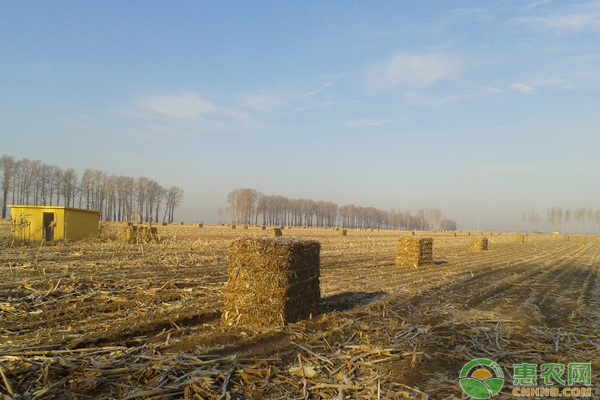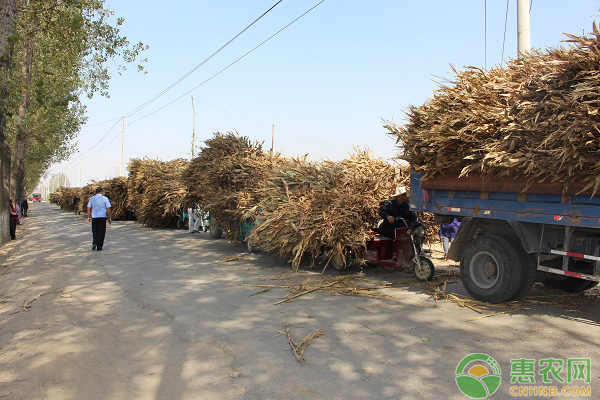The development of China's cattle industry has been slow. With the popularization of agricultural mechanization, rural individual cattle farmers have gradually withdrawn from the historical stage. However, the number of large-scale cattle farms has been delayed, which has led to a decline in the number of domestic cattle stocks. In turn, the price of beef has risen. There are many reasons for this situation, but the most important one is that feed, most cattle-raiser has a feeling that “the cow is difficult to raise nutrientsâ€. However, according to the forecast data released by the Ministry of Agriculture, the corn planting area in 2017 will still reach 35,540 thousand hectares (about 538 million mu). The treatment of corn stalks has always been a big problem. Discarding at random and burning on the spot will inevitably cause environmental pollution. However, there will be some drawbacks in returning to the fields, such as unfavorable for planting and emergence, increased pests and diseases, and crop failure. If you can use these corn stalks to raise cattle, you can not only provide sufficient feed source for raising cattle, but also solve the problem of corn stalk treatment. 1. 500 million mu of corn stalks can be 100 million heads of cattle. Due to different corn varieties, planting areas and growth, the yield of straw is slightly different. Under normal circumstances, about 5,000 kg of fresh straw per mu can be left after the corn is removed. Considering that corn stalks will have a loss of 10% to 20% during silage, it can be used to produce 4,000 to 4,500 jins of silage per acre of fresh straw. The dry matter content of silage is 40%~50%. After processing, the dry matter weight of corn stalks per mu is 1600~2250 kg. The quality of dry food on the day of cattle is about 3% of body weight. For example, a cow weighing 1000 kg needs to feed about 30 kg of dry matter per day. The roughage usually accounts for about 70% of the diet, about 21 kg. One year, a 1,000-pound cow needs to eat 7665 kg of dry matter-quality roughage. Calculating 3.4-4.8 mu of corn stalk can satisfy the demand for roughage of one cow a year. The country's 500 million mu of corn stalk raises 100 million head of cattle. It can be said that it is easy and enjoyable. Second, the problem of corn stalk utilization The reason why there is a lack of feed resources on the other side of the cattle is difficult to handle, mainly due to the difficulty of using corn stalks. 1. Collection The harvest time of corn can be said to be very short. In most areas, the harvest will be completed in 7~10 days. The bad weather will leave the cattle-raiser to collect corn stalks for only 3~5 days, because farmers need to take time to plant the land and sow. I will definitely not wait too much. In addition, the corn stalk collection machinery is relatively backward, so it is still mainly based on low-efficiency manpower collection. Often the corn harvest time has passed some large-scale cattle farms that have not collected enough straw. However, in the past two years, the straw collection machinery applicable to domestic plots has been developed rapidly. It is believed that the collection problem will be solved soon. 2, transportation Because of its low value and large volume, corn stalks are very unfavorable for long-distance transportation and can only be circulated within a certain range. The current purchase price of fresh corn stalk is 0.05~0.07 yuan/kg, and the cost of processing into silage is generally 0.09~0.11 yuan/kg, but the purchase from the field (including transportation cost) needs 0.25~0.5 yuan/jin, which is extremely To a certain extent, the cost of raising cattle is increased. There is currently no good solution to this problem. It can only rely on increasing the number of cattle raised in the corn producing area to reduce the transportation distance. Third, corn stalk processing The processing methods of corn stalks are mainly divided into three types, which are briefly introduced here. 1, dry After the corn is harvested, the straw is naturally dried and dried, which is the most convenient way of processing, but its palatability is poor, the nutritional value is low, and mildew is prone to occur during drying and storage. 2, silage The silage is mostly made of corn stalks with sticks or fermented with whole corn stalks without sticks. Corn stalk silage is relatively simple. First, make a fermentation tank (窖) or use a sealed bag. Then cut the corn stalk into the fermentation vessel and compact it. Finally, seal it after filling, usually after 15-20 days of fermentation. It can be used. 3, yellow storage Yellow croaker is a feed fermentation method relative to silage, but the raw material is semi-dry corn stalk or dry corn stalk. The practice is the same as silage. First, make a fermentation tank (窖) or use a sealed bag. Then cut the corn stover and fill it with the fermentation container. At the same time of filling and compacting, you need to spray the solution containing the biological agent to increase the moisture content. Enhance the fermentation effect, and finally seal it after the filling is completed.
China leading manufacturers and suppliers of Home Office Mechanical Lock Safebox,Single Door Mechanical Lock Safebox,Steel Mechanical Lock Safebox,Double Door Mechanical Lock Safebox etc.Our factory has more than 40 years of production experience, if you need, you can contact us online
Features of mechanical lock Safe Box:
The mechanical lock safe is made of 10mm alloy steel door plate, the box is made of 1.2-1.5mm steel plate, and the lock bolt is made of industrial laser engraving, with the original Tiger brand logo, closely fitted with the card slot, and the three-sided lock increases the force area to achieve linkage anti-skid,The mysterious obsidian black color of this mechanical lock safe exudes an understated yet sophisticated charm that complements and harmonizes with the eco-friendly process.
Home Office Mechanical Lock Safebox,Single Door Mechanical Lock Safebox,Steel Mechanical Lock Safebox Hebei Hupai Aodi Cabinet Industry Co.,Ltd. , https://www.aodicabinet.com

1. Mechanical locks do not require batteries
2. Thickened door panel, steel forging
3. New panel, rust-proof and corrosion-resistant
4. Environmentally friendly baking varnish with firm paint surface
5. German laser cutting, flat door micro seam
6. Safe and stable with low failure rate